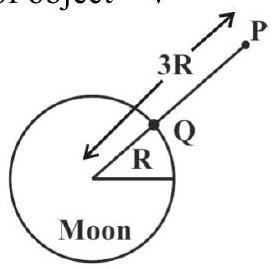138706 If a satellite has to orbit the earth in a circular path every $6 \mathrm{hrs}$, at what distance from the surface of the earth should be satellite placed (radius of earth, $R_{e}=6400 \mathrm{~km}$ ) (Assume, $\frac{G M}{4 \pi^{2}}=8.0 \times 10^{12} \mathrm{~N} / \mathrm{m}^{2} \mathrm{~kg}$, where, $G$ and $M$ are gravitational constant and mass of earth and $10^{1 / 3}=2.1$.
138706 If a satellite has to orbit the earth in a circular path every $6 \mathrm{hrs}$, at what distance from the surface of the earth should be satellite placed (radius of earth, $R_{e}=6400 \mathrm{~km}$ ) (Assume, $\frac{G M}{4 \pi^{2}}=8.0 \times 10^{12} \mathrm{~N} / \mathrm{m}^{2} \mathrm{~kg}$, where, $G$ and $M$ are gravitational constant and mass of earth and $10^{1 / 3}=2.1$.
138706 If a satellite has to orbit the earth in a circular path every $6 \mathrm{hrs}$, at what distance from the surface of the earth should be satellite placed (radius of earth, $R_{e}=6400 \mathrm{~km}$ ) (Assume, $\frac{G M}{4 \pi^{2}}=8.0 \times 10^{12} \mathrm{~N} / \mathrm{m}^{2} \mathrm{~kg}$, where, $G$ and $M$ are gravitational constant and mass of earth and $10^{1 / 3}=2.1$.
138706 If a satellite has to orbit the earth in a circular path every $6 \mathrm{hrs}$, at what distance from the surface of the earth should be satellite placed (radius of earth, $R_{e}=6400 \mathrm{~km}$ ) (Assume, $\frac{G M}{4 \pi^{2}}=8.0 \times 10^{12} \mathrm{~N} / \mathrm{m}^{2} \mathrm{~kg}$, where, $G$ and $M$ are gravitational constant and mass of earth and $10^{1 / 3}=2.1$.

